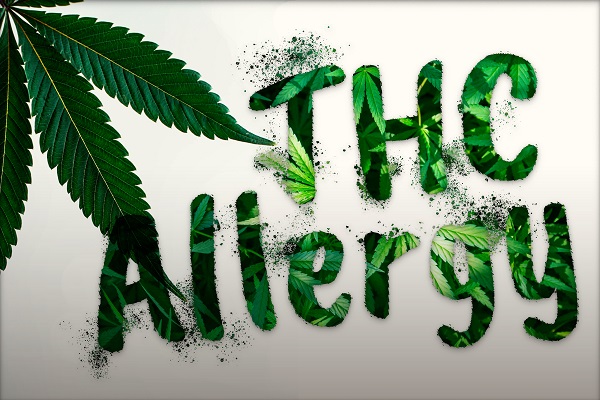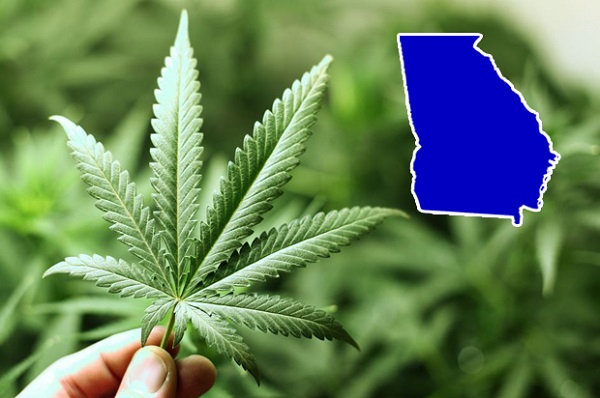Unfortunately, for many who use THC recreationally or are associated with the cannabis industry, the risk of an allergic reaction to it is very real. This reaction is characterized by urticaria, a red rash on exposed skin, often accompanied by mild to moderate respiratory irritation (including coughing and sneezing). In most cases, this condition occurs among those who work in close contact with the growing cannabis plant.
Although there are few cases of cannabis allergies among consumers, those who work in close contact with the growing plant often report allergy symptoms. Cannabis pollen, as well as certain proteins found in the growing plant, have been identified as major triggers of cannabis allergens. Contact with these allergens can cause dermatitis-like symptoms such as redness and rashes, as well as systemic symptoms such as coughing, shortness of breath and sneezing.
People prone to allergies from cannabis are often also prone to allergies from contact with many other plants. Cannabis allergy should not be confused with cannabis hyperemesis syndrome, which is related specifically to cannabis use. Cannabis allergy is caused by contact with and exposure to cannabis pollen (working on a cannabis farm, pruning etc.).
Cannabis allergy symptoms

This publication (https://onlinelibrary.wiley.com/doi/10.1111/j.0105-1873.2006.0560h.x) reports that cannabis allergy symptoms most often resemble contact dermatitis and are most common in people who work on cannabis farms, and sometimes even those who work in dispensaries experience similar symptoms. Such people usually complain of itching and reddening of the skin, which in severe cases can develop into classic extensive urticaria. The eyes may also be affected and become inflamed and itchy (allergic blepharitis or conjunctivitis).
In addition to dermatitis, cannabis allergies can also present with respiratory symptoms, including allergic rhinitis and bronchial asthma (https://www.annallergy.org/article/S1081-1206(15)00035-6/fulltext). Other symptoms include allergic conjunctivitis, food allergies, eczema, drug rash, contact urticaria, and anaphylaxis.
In severe cases of cannabis allergy, anaphylactic shock usually occurs, although such cases are characterized as isolated and anecdotal. This pathology is characterized by the lightning-fast onset of an itchy rash, shortness of breath, dizziness, swelling of the throat or tongue, vomiting, and a sharp drop in blood pressure. Untreated, anaphylactic shock can cause loss of consciousness and even death (currently all known medical databases do not contain information about fatal cases due to cannabis-associated anaphylactic shock).
What causes allergies?
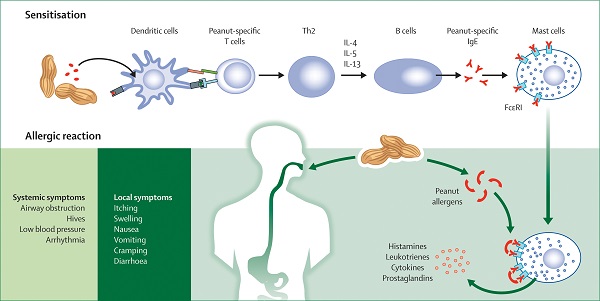
You probably have a question: What causes allergies to cannabis, after all? We will try to answer it.
First, it is important to distinguish between true allergies to cannabis and allergic reactions to substances in cannabis that are not endogenous to the plant: mold, dust mites, various chemical agents, and so on. Cannabis that is improperly grown and poorly stored is known to contain both.
The literature describes several cases of severe reactions (https://linkinghub.elsevier.com/retrieve/pii/S0012369216334845) that occurred in people who smoked cannabis with mold and at least one death was related (however, in this case the person had a severely reduced immune system due to recent medical surgery).
Despite this, cannabis allergies are specific reactions, that is, they result from exposure to some specific trigger contained in cannabis. In fact, there are several substances that can be dangerous to sensitive people, and it can happen that different cases of cannabis allergy occur in response to different substances contained in it.
A Little Pathophysiology
Histamine (https://pubchem.ncbi.nlm.nih.gov/compound/Histamine) is an organic nitrogen-containing compound and is synthesized in the body by decarboxylation of the amino acid histidine. Histamine plays a vital role in the regulation of the local immune response. When allergens are present in certain key areas of the body (such as mucous membranes), histamine is released by mast cells or white blood cells known as basophils in a process known as degranulation.
Degranulation is a mechanism by which certain cells involved in the immune response release cytotoxic compounds that destroy invading microorganisms, such as allergens. When such allergens enter the body, molecules of a free-floating antibody protein known as immunoglobulin E (IgE) bind to Fc receptors found on the surface of mast cells and basophils.
Degranulation is a mechanism by which certain cells involved in the immune response release cytotoxic compounds that destroy invading microorganisms, such as allergens. When such allergens enter the body, molecules of a free-floating antibody protein known as immunoglobulin E (https://www.ncbi.nlm.nih.gov/pmc/articles/PMC2847274/) bind to Fc receptors found on the surface of mast cells and basophils.
The allergens then bind to IgE, and the cell starts releasing histamine. This causes an inflammatory response and increases capillary permeability, allowing certain white blood cells and proteins to directly attack the invading pathogens.
It is the physiology of how the body deals with allergens. The immune response is important for maintaining health, especially against foreign bodies. However, allergies are often thought of as an overreaction of the immune system, producing histamine in the absence of a truly threatening foreign substance. Various substances in cannabis trigger this sensitivity in certain people, leading to symptoms otherwise known as hay fever.
This is a brief explanation of how the body copes with an allergen. However, allergies are an overreaction of the immune system, producing histamine in the absence of a truly threatening foreign substance. Various substances in cannabis trigger this sensitivity in certain people, leading to symptoms otherwise known as hay fever.
Cannabis allergens
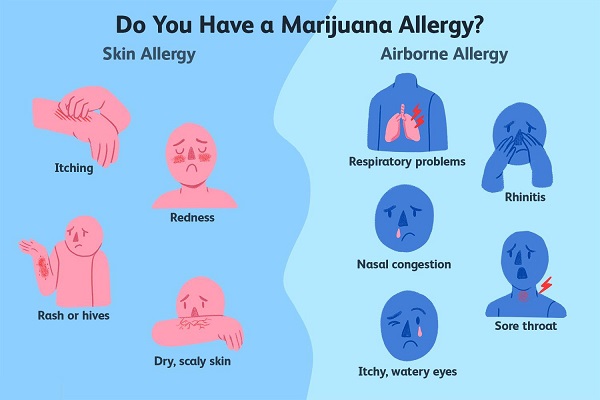
One of the first allergens that causes an allergic reaction is cannabis pollen. It is usually only produced by male plants, but can also be produced by females that express hermaphroditic male flowers.
Cannabis pollen has been shown in several studies to cause allergic reactions and people who are sensitive to cannabis pollen are usually sensitive to pollen from other plants as well. A 2000 study in the Midwestern United States found that 73% of subjects were sensitive to cannabis pollen (https://linkinghub.elsevier.com/retrieve/pii/S1081120610624738), and that each of these people were also sensitive to native plants such as ragweed and Russian thistle.
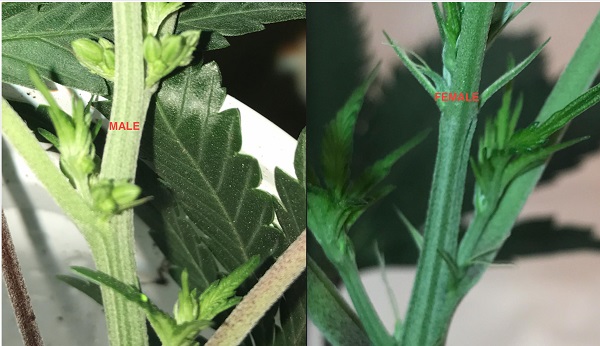
However, this fact does not explain the cases of cannabis allergies caused by female plants without signs of hermaphroditism. In these cases, the cause may lie elsewhere, and scientists have identified nearly a dozen possible culprits.
Most of the possible allergens found in cannabis are proteins, and many have been found in other plants. Several studies have pointed to the presence in cannabis of a particular type of protein known as lipid transfer protein (LTP), which often causes allergies.
Cannabis LTP – the cause of allergies
Several studies have demonstrated that the LTP present in cannabis can cause an allergic reaction. One of these studies, which was published in 2007, reported that a unique LTP was isolated in cannabis, which was later called Can S3. In a more detailed study of its effects in humans, patients showed specific sensitization to Can S3, in both skin tests and other immunological tests. However, since sensitization to Can S3 is not absolute, other cannabis allergens probably play a role.
Several studies have demonstrated that the LTP present in cannabis can cause an allergic reaction. One of these studies (https://linkinghub.elsevier.com/retrieve/pii/S0091674907014534), which was published in 2007, reported that a unique LTP was isolated in cannabis, which was later named Can S3. In a more detailed study of its effects in humans, patients showed specific sensitization to Can S3, in both skin tests and other immunological tests (https://linkinghub.elsevier.com/retrieve/pii/S2213219818305944). However, since Can S3 sensitization is not absolute, other cannabis allergens probably play a role as well.
On the other hand, in a study published in Annals of Allergy, Asthma & Immunology in 2013 (https://www.annallergy.org/article/S1081-1206(13)00285-8/fulltext), the researchers found no evidence of LTP protein in cannabis. However, they did find strong evidence for other common allergens.
Other cannabis allergens
In the same 2013 study mentioned above, several other potential cannabis allergens were identified. Cannabis was found to contain common naturally occurring allergens, including RuBisCO, a protein that is fundamental to the process of photosynthesis. This has been linked to many other cases of plant allergy.
In addition to RuBisCO, the researchers identified oxygen-evolving enhancer protein 2. It was an important allergen in this study, although interestingly, it has never been identified as an allergen in any other cannabis allergen study.
Along with these two proteins, several other potential candidates were found: ATP synthase, GAPDH (a major known wheat and mushroom allergen), PGK (yeast allergy), BiP (hazelnut allergy).
How to reduce the symptoms of allergies?
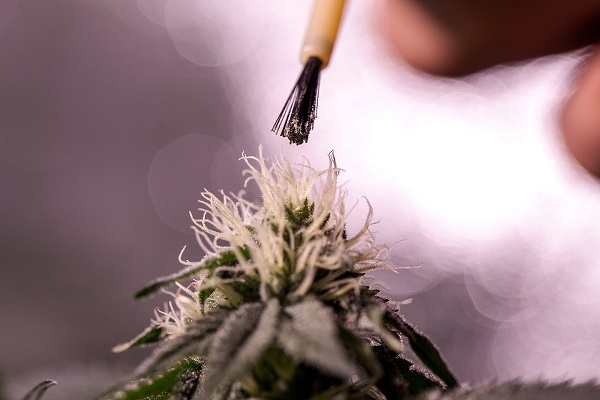
Normally, allergic reactions can be treated with common antihistamines (a group of drugs that stop the production of histamine by immune cells). However, this does not apply to anaphylaxis, which usually requires specialized emergency medical care.
Thus, there is no specific medication that will help specifically with cannabis allergies. Those who experience cross-sensitivities can simply use the same medications they would use to treat allergies to other plants.
There are various ways to minimize exposure to cannabis allergens when the risk of exposure is high. High risk of exposure generally extends to workers who are in close proximity to the plant. However, as has been demonstrated in the southwestern United States, pollen can spread for many miles and therefore can cause periods of high risk in certain areas at certain times of the year.
It is recommended that you wear long-sleeved clothing as well as masks, gloves, goggles, and other physical barriers to contact. Use inhalers, antihistamines, and epi-pen only when allergy symptoms appear. Make sure the airflow is optimal so that allergens don’t stay in the air for too long.
Summary
Finally, the best way to prevent allergic reactions is to avoid contact with the source as much as possible. Many people who work with cannabis continue to expose themselves year after year in the hope that their sensitivity will decrease, but it is unlikely that it will. If severely affected, it is advisable to avoid all physical contact and proximity to the plant, which may mean that for some, continuing to work with cannabis is impossible.

